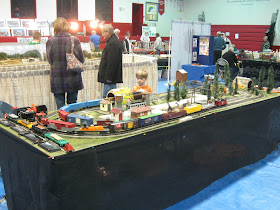When I first saw Patrick Lawson’s CP Rail Cascade Subdivision in model railroad magazines, I was awestruck.
The HO scale layout, which was set in B.C.’s Fraser River Canyon and Mission Junction, was complete in almost every way—scenery, structures, locomotives, rolling stock. One look and you knew he had captured the essence of modern railroading in that locale.
The double-deck layout, which was set in 1990, filled a 16 by 14 foot room. It featured lots of CP Rail’s ubiquitous SD40-2 units (including a kitbashed SD40-2F Red Barn), vans (the Canadian term for cabooses) and modern unit grain and coal trains.
That alone made the layout great, but what made the Cascade Sub. stand out was the details—drains in parking lots, drainage ditches and culverts alongside raised track bed, and proper handrails at the front and rear of Canadian locomotives.
As it turns out, the Cascade Sub. was one of three layouts built by Patrick. His first effort was the freelanced Northern Railroad. He then turned his attention to modeling CP Rail, first building a shelf-style layout before creating the Cascade Sub.
The layout featured code 70 Shinohara track and number six and eight turnouts. Train lengths were about 20 cars, plus three locomotives. Trains were operated with walkaround throttles.
Since Patrick built the layout in the 1990s, he had to build all of his unique Canadian Teoli coal cars from kits—no ready-to-run Intermountain cars were available back then!
The Cascade Sub. is gone now—Patrick dismantled it about ten years ago. But that doesn’t mean he isn’t still modeling; he built a model of the Point Ellice Ferry Slip for the Maritime Museum of Victoria, B.C. (see photos below) and is currently building models for the Revelstoke Railway Museum's model railway club.
Patrick also works with Jason Shron of Rapido Trains on the drawings for The Canadian and other models, such as the CP & CN wide vision cabooses, and the CN & CP FP9s.
Like most layouts built in the previous century, no digital photos were taken (that technology not being available then), and Patrick hasn't gotten around to scanning his prints or slides. Hence, a search for images of the Cascade Sub. on the Web turns up nothing—until now.
With Patrick’s permission, I have scanned photos from Railroad Model Craftsman (June, 1989, Dec., 1991, Nov., 1992) and Great Model Railroads (2002).
Like most layouts built in the previous century, no digital photos were taken (that technology not being available then), and Patrick hasn't gotten around to scanning his prints or slides. Hence, a search for images of the Cascade Sub. on the Web turns up nothing—until now.
With Patrick’s permission, I have scanned photos from Railroad Model Craftsman (June, 1989, Dec., 1991, Nov., 1992) and Great Model Railroads (2002).



















































